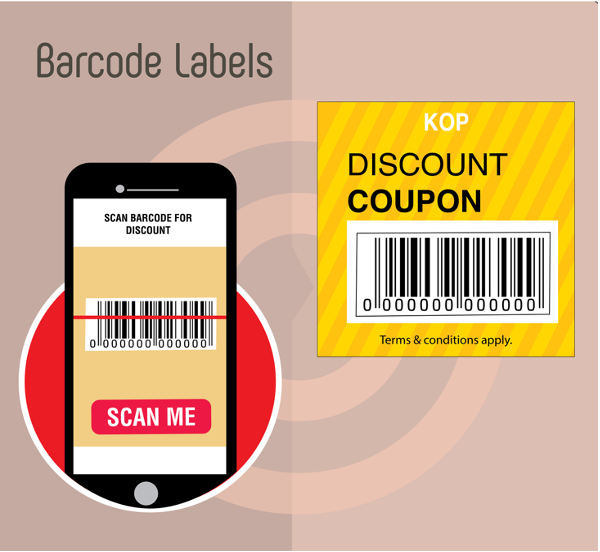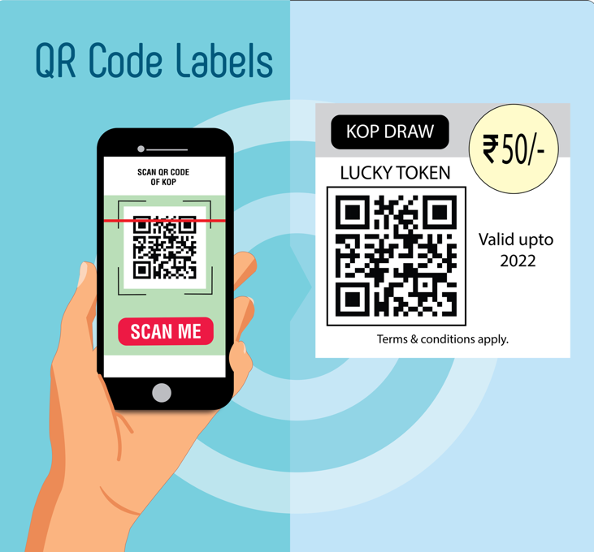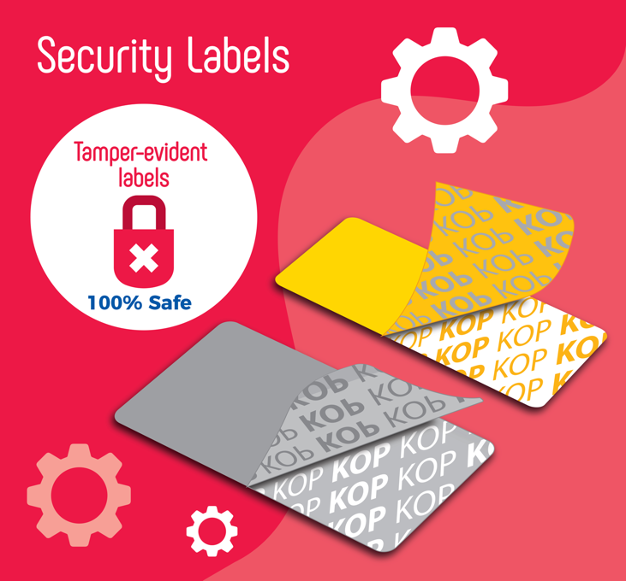
All you need to know about QR code labels
WHAT IS A QR CODE?
QR stands for Quick Response Code and is an "upgraded" version of a barcode. A QR code is a customized barcode that can store more information in a smaller space. These 2D barcodes can store more information than 4,000 characters vertically and horizontally. A traditional (linear), barcode can store approximately 20 characters.
It is a machine-readable barcode label that consists of a series of squares in black and white. Although URLs are the most common information stored in QR codes, any data can be stored in these QR codes. This includes contact data, calendar data, email addresses and phone numbers.
They were originally intended to track cars during manufacturing, but they are now found all over the place, from warehouses to assembly lines to business cards to billboards!
HOW ARE QR CODES MADE?
Conventional 1D barcodes can only be mechanically scanned. The code is read by bouncing a narrow beam of light onto it. This pattern of light can be used to interpret the lines by observing the white spaces between them. QR codes can be digitally scanned. These codes are digitally scanned and consist of blocks and squares, or pixels. An image sensor can read them and interpret them by a system processor. The dots and squares represent position, alignment and timing, version information and format information. The QR reader/barcode scanner can quickly identify the image and position it using the three large squares.
How to scan a QR Code?
The latest smartphones come with an integrated QR Code reader. This includes Bixby Vision for Samsung, and the iOS 11 operating systems for Apple. Don’t worry. There are many options available in the app stores for phones that do not have a QR Code reader. These apps can be downloaded and used with the click of a button.

How Do You Create A QR Code?
You might have already decided to use a QR code for your marketing strategy. But you may be wondering how you are going to do it. There are many online QR code generators that can be used to generate your QR codes. This makes the whole QR code generation process very simple.
HOW TO USE A QR CODE
QR codes can be used in business for many purposes, including business cards, event promotion, and business invoices:
Business Cards
With the addition of a QR Code, you can offer your customers more than a regular business card. A QR code can be used to store more information than your basic information. You can include links to your blog, website, social media and add photos. All your information can easily be saved to their contact list by scanning the QR code.
You can include a QR code on business stationery and invoices to direct customers to your site. This will allow you to provide more detail and useful information, such as user guides, return labels, contact details, and more.
Inventory Management
QR codes and other 2D barcodes are very useful tools in manufacturing and inventory management. You can track more than product price and product name. QR codes can include additional information like serial number, lot number, dates, and other data points.
Events and Advertisements
You can use QR codes to promote your events and advertising. The barcode scanner will automatically create a virtual version. E-tickets, maps, handouts and money-off coupons can all be included.
Ordering
Many restaurants, bars, and pubs will implement a new ordering system in response to pandemic. This is intended to reduce the number of staff members who have contact with customers. These types of businesses can use QR codes to facilitate ordering. Customers can use their smartphones to scan a QR code that will take them to an app or website where they can order drinks and food. This allows them to place orders quickly without having to speak to staff. This will allow customers to order quickly and it will also draw them in as they will feel safe knowing that your premises are COVID-safe.

Kwality Offset is your source for barcode labels. We can help you identify and track your assets using simple, effective labels and tags.
